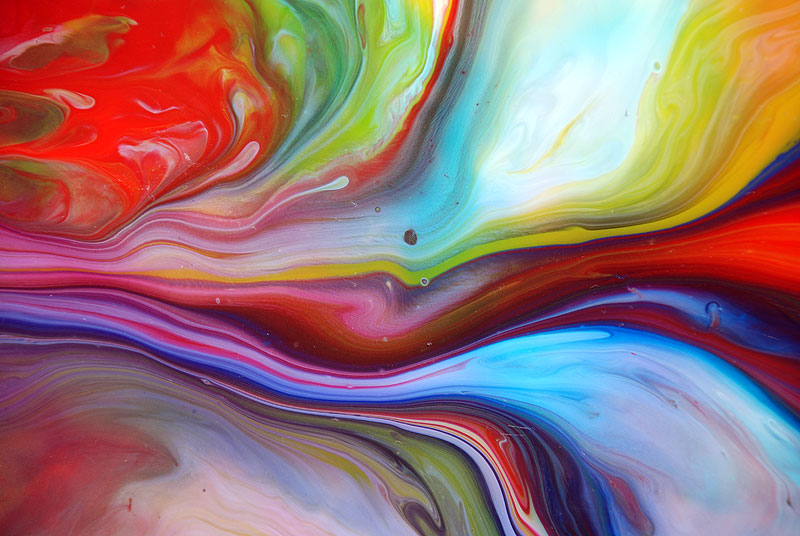The world of modern paintings is a boundless ocean of creativity, where each artwork serves as a portal to uncharted territories of emotion, thought, and visual spectacle. This article embarks on an exploratory journey through the diverse landscapes of modern paintings, highlighting the unique ways in which contemporary artists wield their brushes to create beauty, provoke thought, and communicate deep, often unspoken truths.
The Essence of Modernity in Art
Modern art represents a period of tumultuous change, breaking free from the constraints of traditional forms and subjects to embrace an ever-expanding universe of ideas and techniques. This era, characterized by innovation and experimentation, has given rise to artworks that challenge our perceptions and engage with the complexities of the human condition and the world around us. The modern painting, with its myriad styles and themes, invites viewers to engage in a dialogue, not just with the artwork but with themselves and the society they inhabit.
The Tapestry of Styles and Movements
Within the realm of modern paintings, a rich tapestry of styles and movements emerges, each with its own distinctive voice and vision. Abstract expressionism, surrealism, and pop art are just a few of the currents that have shaped the modern art landscape. Abstract expressionists like Jackson Pollock and Mark Rothko sought to capture raw, emotional experiences through their work, using color and form in ways that evoke feelings rather than depict the physical world.
Surrealists, on the other hand, delved into the realm of dreams and the unconscious, creating bizarre, dream-like scenes that challenge our notions of reality. Pop art, epitomized by artists like Andy Warhol and Roy Lichtenstein, embraced popular culture, using images from advertising, comic books, and everyday objects to comment on the consumer society.
The Power of Color and Texture
One of the hallmarks of modern paintings is the innovative use of color and texture. Artists experiment with these elements to convey mood, atmosphere, and meaning. In Vincent van Gogh’s “Starry Night,” for example, swirling patterns and vibrant hues create a dynamic, almost pulsating effect that captures the intensity of the artist’s emotions and his fascination with the night sky. Similarly, the textured canvases of Anselm Kiefer, laden with materials like straw, ash, and clay, evoke the physicality of the landscape and the weight of history.
The Reflection of Societal Themes
Modern paintings often reflect on societal themes, serving as a mirror to the world’s joys, struggles, and contradictions. The works of Frida Kahlo, for example, explore identity, post-colonialism, gender, class, and race in Mexican society. Meanwhile, Jean-Michel Basquiat’s paintings are imbued with commentary on power structures, inequality, and racism, his graffiti-like scribbles and iconography drawing attention to the voices of the marginalized. Through their art, these painters not only offer critique but also celebrate the resilience and diversity of the human spirit.
Personal Journeys and Inner Worlds
Equally important in modern paintings are the personal journeys and inner worlds of the artists. Many modern painters turn inward, using their canvases as a means of introspection and self-expression. The abstract landscapes of Georgia O’Keeffe, with their magnified flowers and desolate desert scenes, invite viewers into the artist’s inner realm, a space of solitude and contemplation. Lucian Freud’s penetrating portraits go beyond mere physical likeness, exploring the psychological depths of his subjects. These artworks offer a glimpse into the soul, inviting us to reflect on our own inner lives and connections to others.
The Dialogue with Technology and New Media
In the modern era, the dialogue between painting and technology has opened new avenues for artistic expression. Digital art, video art, and the use of synthetic materials have expanded the definition of painting, blurring the lines between traditional and contemporary forms. Artists like David Hockney have embraced digital tools to create vibrant landscapes and portraits, while others incorporate multimedia elements into their work, creating immersive experiences that challenge the boundaries of the canvas.
Conclusion: A World of Infinite Possibilities
The exploration of modern paintings reveals a world of infinite possibilities, where every brushstroke tells a story, and every color carries an emotion. These artworks invite us to look beyond the surface, to engage with the ideas and emotions that drive human creativity. As we delve into the depths of modern art, we find not only beauty and innovation but also a reflection of our own humanity.
In this journey through modern paintings, we are reminded of the power of art to connect us, to challenge us, and to inspire us. Through the eyes of the artists, we see the world anew, enriched by the diversity of perspectives and the endless pursuit of beauty and truth. As we stand before these brushstrokes of beauty, we are not merely observers but participants in a continuing dialogue, woven through the fabric of time and culture, ever-evolving and boundless.

